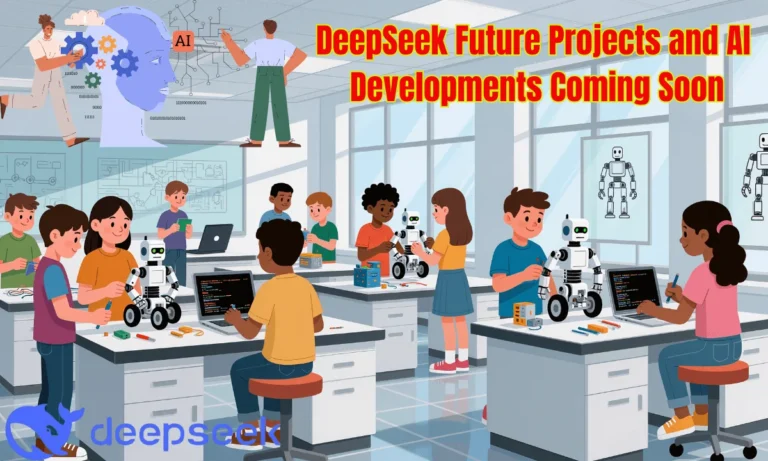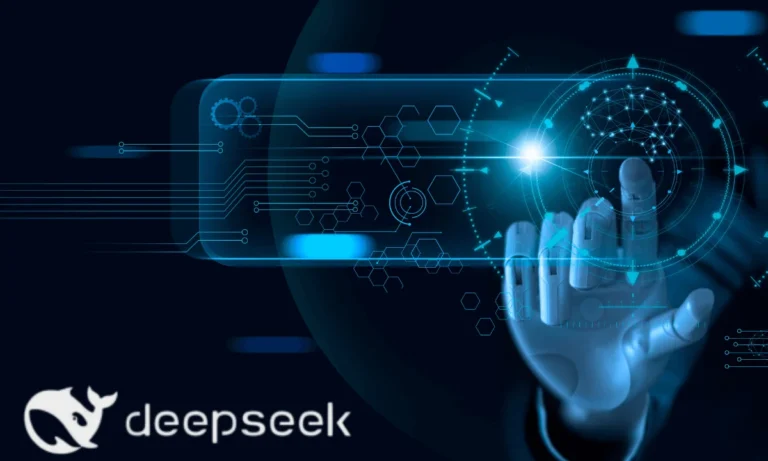Step-by-Step: Building Your First AI Model with DeepSeek Tools
Introduction
Artificial Intelligence (AI) has rapidly moved from futuristic concept to practical necessity. From automating business operations to personal productivity tools, AI is revolutionizing how we work and live. For beginners, getting started with AI might seem intimidating. But thanks to modern platforms like DeepSeek, creating your first AI model has never been easier.
This guide will take you through the step-by-step process of building your first AI model using DeepSeek tools, even if you have minimal coding experience. Whether you’re a student, data science enthusiast, or entrepreneur, this article will equip you with the knowledge to kick-start your AI journey.
Machine Learning 101: How AI is Revolutionizing Industries in Pakistan
Why Choose DeepSeek for Your AI Model?
DeepSeek is a powerful AI development platform designed to simplify machine learning and large language model (LLM) training. It provides a user-friendly interface, integrated tools for model customization, and access to pre-trained models—making it ideal for beginners and professionals alike.
Key Benefits of DeepSeek:
- Pre-built model templates
- Support for both training and fine-tuning
- GPU-powered cloud infrastructure
- No deep programming knowledge required
- Open-source options for customization
DeepSeek AI’s Vision for Ethical AI Governance in Pakistan
Step 1: Set Up Your DeepSeek Account
Before building your model, you need access to the DeepSeek platform. Here’s how to get started:
- Visit the DeepSeek Website:
Navigate to deepseek.com and click on Sign Up. - Register Your Account:
Provide your email address, set a password, and verify your account through the confirmation link sent to your email. - Select a Plan:
DeepSeek offers both free and premium tiers. The free plan includes basic access to model training tools, which is enough to build your first AI project. - Login to Dashboard:
Once registered, log in to access your personal workspace and project tools.
Understanding and Fixing the 500 Internal Server Error on DeepSeek.com
Step 2: Understand the Types of AI Models You Can Build
DeepSeek allows you to build several types of AI models, including:
- Text Classification Models – Useful for spam detection, sentiment analysis.
- Image Recognition Models – Ideal for object detection, medical imaging.
- Language Models (LLMs) – For chatbots, content generation, summarization.
- Recommendation Systems – Common in e-commerce and streaming platforms.
For beginners, we recommend starting with a text classification model, as it’s easier to build and provides valuable real-world applications.
The Future of DeepSeek AI: Innovations, Challenges, and Global Impact
Step 3: Prepare Your Dataset
AI models learn from data. DeepSeek allows you to upload your dataset or use publicly available datasets.
Tips for Dataset Preparation:
- Format: Ensure your data is in CSV or JSON format.
- Structure: Each row should contain input and output labels. For example, a sentiment analysis dataset might include:
- Input: “I love this product!”
- Label: “Positive”
Uploading the Dataset:
- Go to your DeepSeek dashboard.
- Click “New Project” → Select Text Classification.
- Upload your dataset file or choose from available samples.
- Validate that your data is correctly mapped before training.
The Metaverse and AI: A New Digital Frontier for Pakistan
Step 4: Choose a Pre-Built Model or Train From Scratch
DeepSeek offers two approaches to building your model:
1. Use a Pre-trained Model:
- Saves time.
- Great for small datasets.
- Select a model like BERT, GPT-2, or DeepSeek LLM.
2. Train Your Model from Scratch:
- Requires more data.
- Gives better customization.
- Ideal for unique use cases or advanced learning.
To keep things simple, beginners can start with a pre-trained model and fine-tune it using their dataset.
Mastering DeepSeek in Pakistan: A Comprehensive Guide to AI-Powered Solutions
Step 5: Configure Model Parameters
DeepSeek allows you to tweak parameters that control how your model learns. For beginners, the default settings often work well, but here’s what you can adjust:
- Epochs: Number of times the model sees the dataset. Start with 3–5.
- Batch Size: Number of data points processed in one go.
- Learning Rate: Controls how much the model adjusts after each round.
Pro Tip: Use the “Auto-configure” option if you’re unsure—DeepSeek will choose optimal settings for your project.
Step 6: Train the Model
Now comes the exciting part—training your AI model:
- Click the “Train Model” button.
- Monitor progress in the live dashboard.
- Depending on your dataset size and plan, training may take a few minutes to an hour.
DeepSeek provides real-time logs and charts that show accuracy, loss, and other metrics during training.
AI in Space Exploration: What Pakistan Can Learn from Global Trends
Step 7: Evaluate the Model’s Performance
Once the model is trained, it’s essential to test its performance:
Key Metrics to Review:
- Accuracy: Percentage of correct predictions.
- Precision/Recall: Measures of relevance and completeness.
- Confusion Matrix: Shows correct vs. incorrect classifications.
If accuracy is below expectations, consider:
- Using a larger dataset
- Cleaning your data
- Tweaking model parameters
- Trying a different model architecture
DeepSeek R1: Revolutionising the Future of AI-Powered Solutions
Step 8: Deploy the Model
DeepSeek simplifies deployment with its integrated API services. You can:
- Generate an API key.
- Embed the model in web apps, chatbots, or mobile apps.
- Use the built-in playground to test real-time queries.
Example Use Case:
If you built a customer sentiment analysis model, you can deploy it on your website to analyze user feedback in real-time.
Chinese AI-Powered Chatbot “DeepSeek” Causes $1 Trillion Loss for Major U.S. Companies
Step 9: Monitor and Improve
AI modeling is an iterative process. Use feedback loops to enhance your model:
- Regularly re-train with new data.
- Track performance using DeepSeek’s monitoring tools.
- Update datasets to reflect new trends or language use.
Pro Tip: Enable model versioning in DeepSeek to experiment with different versions and keep the best-performing one live.
Predictive Analytics: Forecasting Pakistan’s Economic Growth with AI
Conclusion
Building your first AI model doesn’t have to be complicated. With platforms like DeepSeek, even beginners can launch their own intelligent applications without deep expertise in machine learning. By following this step-by-step guide, you’ll not only understand the AI development lifecycle but also gain hands-on experience with a real tool used in the industry.
Whether you’re looking to create a chatbot, analyze customer reviews, or experiment with image data, DeepSeek provides the ideal environment to begin your AI journey.
Deep Seek Tops the Apple Store – A Game-Changer in AI Technology!
FAQs – Building AI Models with DeepSeek
Q1: Do I need to know Python or coding?
No, DeepSeek offers a no-code environment for basic model creation, ideal for beginners.
Q2: Is DeepSeek free to use?
Yes, there’s a free plan with limited GPU usage and storage, enough for small-scale projects.
Q3: Can I export my model?
Yes, DeepSeek allows exporting models for offline deployment in certain formats.
Q4: What datasets can I use?
You can upload your own CSV/JSON files or access public datasets through the platform.







